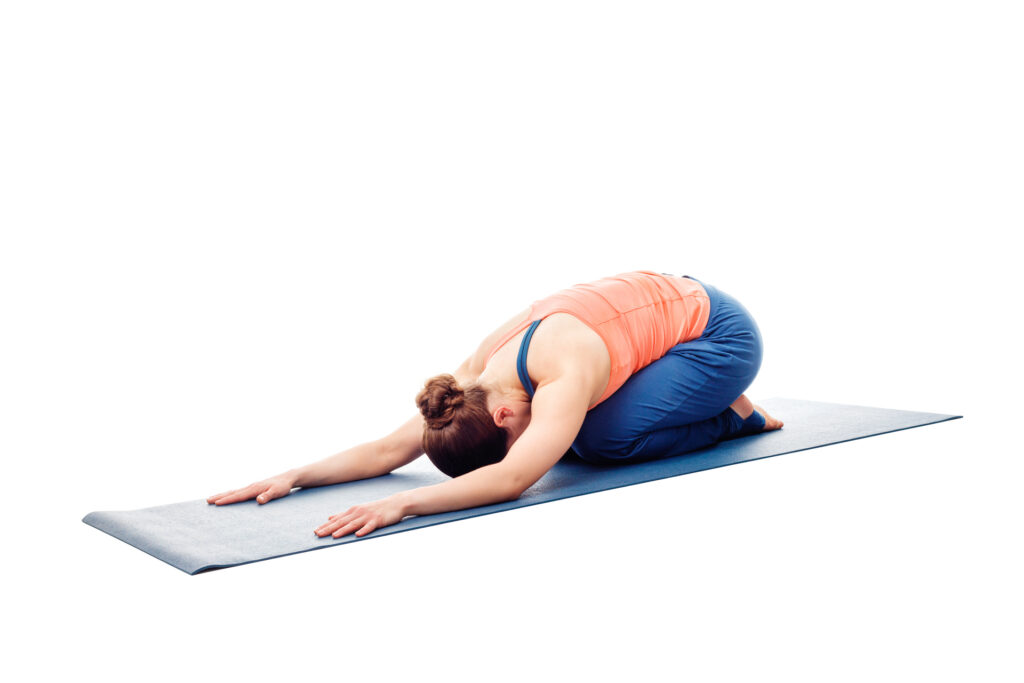Yoga has gained significant attention as a tool used for people with high blood pressure. In the context of this article, we will refer to yoga as an ancient practice that combines physical postures, breathing exercises, and meditation.
In recent years, numerous studies have investigated the potential benefits of yoga for individuals with hypertension. The findings suggest that this ancient practice may be a valuable adjunct therapy for managing high blood pressure. It offers a natural and relatively low-cost approach to improving cardiovascular health.
Conventional treatments for hypertension, such as prescription medications, can be effective but often come with limitations. Many patients struggle with medication side effects, poor adherence, and the high cost of long-term treatment. As a result, there is growing interest in complementary and alternative therapies that may help manage high blood pressure.
Evidence on yoga for high blood pressure
A growing body of research has explored the effects of yoga on blood pressure in individuals with hypertension. One systematic review and meta-analysis, published in the European Journal of Preventive Cardiology (links below), examined the results of 49 randomized controlled trials. They involved a total of 3,517 participants. The researchers found that yoga interventions had a modest but statistically significant effect on reducing both systolic and diastolic readings.
Another study, published in the Journal of Clinical Hypertension, investigated the effects of a 12-week Iyengar yoga program on blood pressure in individuals with hypertension. The researchers randomly assigned participants to either the yoga group or a control group that made dietary changes. At the end of the 12-week period, the yoga group showed clinically meaningful improvements in 24-hour measurements. Average reductions of 7.5 mmHg and 5.3 mmHg in systolic and diastolic readings respectively were achieved. In contrast, the control group that made dietary changes alone did not experience significant changes in blood pressure.
A randomized controlled trial was published in the Journal of Alternative and Complementary Medicine. It compared the effects of a 12-week yoga program to a health education and walking program in individuals with hypertension. The researchers found that the yoga group had significantly lower systolic and diastolic blood pressure at the end of the 12-week intervention. Average reductions of 9.6 mmHg and 7.1 mmHg, respectively, were achieved.
How yoga affects blood pressure
The mechanisms by which yoga may help lower blood pressure are not fully understood. Several potential pathways have been proposed.
One of the primary mechanisms is the impact of yoga on the autonomic nervous system. The meditation and deep breathing exercises commonly practiced in yoga have been shown to activate the parasympathetic nervous system. It is is responsible for the body’s rest-and-digest response. This, in turn, can lead to a reduction in sympathetic nervous system activity, which is associated with increased blood pressure. By promoting a state of relaxation and reducing stress, yoga may help lower both systolic and diastolic blood pressure.
Additionally, yoga may have positive effects on inflammation, metabolic factors, and gene expression related to cardiovascular health. Studies have suggested that regular yoga practice can lead to reductions in inflammatory markers. They included C-reactive protein, which have been linked to the development and progression of hypertension. Yoga may also influence metabolic factors, such as insulin sensitivity and lipid profiles. They are closely tied to blood pressure regulation.
Yoga poses for high blood pressure
Certain yoga poses and sequences have been specifically recommended for individuals with high blood pressure. These poses are generally gentle, restorative, and focused on promoting relaxation and reducing stress.
One of the most commonly recommended poses is Savasana (Corpse Pose), which involves lying on the back in a relaxed, supine position. This pose can help lower blood pressure by reducing muscle tension, slowing the heart rate, and promoting a state of deep relaxation.
Another beneficial pose is Balasana (Child’s Pose), which involves kneeling on the floor and folding the torso forward, with the forehead resting on the ground. This pose can help calm the mind, reduce stress, and lower blood pressure.
Gentle forward folds, such as Uttanasana (Standing Forward Fold) and Paschimottanasana (Seated Forward Fold), can also be beneficial for individuals with hypertension. These poses can help reduce blood pressure by promoting a sense of calm and reducing muscle tension in the upper body.
Restorative backbends, such as Supta Baddha Konasana (Reclining Bound Angle Pose) and Viparita Karani (Legs-up-the-Wall Pose), can also be helpful for managing high blood pressure. These poses can help open the chest, improve circulation, and promote a sense of relaxation.
Yoga poses to avoid if you have hypertension
It is important to note that certain yoga poses may not be suitable for individuals with hypertension, as they can potentially increase blood pressure. Poses that involve inversion, such as Headstand (Sirsasana) and Shoulder Stand (Sarvangasana), should generally be avoided, as they can cause a temporary spike in blood pressure.
Additionally, vigorous or fast-paced yoga practices, such as Ashtanga or Power Yoga, may not be the best choice for individuals with hypertension, as they can be physically demanding and potentially increase stress levels.
Yoga breathing techniques
In addition to specific yoga poses, breathing exercises (pranayama) can also play a crucial role in managing high blood pressure. Slow, deep breathing techniques, such as Nadi Shodhana (Alternate Nostril Breathing) and Sama Vritti (Equal Ratio Breathing), can help activate the parasympathetic nervous system, leading to a reduction in blood pressure.
These breathing exercises can be practiced on their own or incorporated into a yoga sequence. The focus on controlled, rhythmic breathing can help calm the mind, reduce stress, and promote a sense of relaxation, all of which can contribute to lower blood pressure.
Yoga meditation and relaxation for high blood pressure
Meditation and relaxation techniques are also an integral part of yoga and can be particularly beneficial for individuals with hypertension. Practices such as Yoga Nidra (Yogic Sleep) and Mindfulness Meditation can help reduce stress, lower cortisol levels, and promote a state of deep relaxation, all of which can have a positive impact on blood pressure.
These practices can be incorporated into a yoga session or practiced independently. By cultivating a sense of calm and inner peace, individuals with hypertension may be better equipped to manage the physiological and psychological factors that contribute to high blood pressure.
Safety considerations
People with high blood pressure should also consult with their healthcare providers before starting a yoga program, as they may need to adjust their medication or other treatment plans to accommodate the changes in blood pressure that may occur during yoga practice.
Yoga should be used as a complementary therapy alongside any prescribed medications, not as a replacement for conventional hypertension treatments.
Patients should continue to follow the guidance of their healthcare providers and work closely with them to integrate yoga into their overall hypertension management plan.
Further reading
Effectiveness of Yoga for Hypertension: Systematic Review and Meta-Analysis
Yoga, blood pressure, and health: Research and possible benefits
Best Yoga Poses for High Blood Pressure and Poses to Avoid
Yoga and Hypertension6 Therapeutic role of yoga in hypertension





